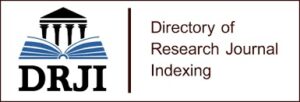ANALYSIS OF FACTORS AFFECTING POVERTY IN PAPUA ISLAND USING SPATIAL PANEL DATA FOR 2017 – 2020
Poverty is a condition characterized by the inability of people to meet their basic needs. Based on the publication from Badan Pusat Statistik (BPS) Indonesia in 2017 – 2020, Papua and West Papua are the two provinces with the highest poverty rate in Indonesia. This study aims to analyze the variables that significantly affect poverty in Papua Island from 2017 – 2020. Poverty is a problem that does not only occur at one time and poverty can be influenced by spatial aspects, so it is necessary to conduct research involving spatial effects over several periods. The spatial heterogeneity test was performed using the Breusch-Pagan test. Based on the test, it was found that there is spatial heterogeneity in poverty data in Papua Island from 2017 – 2020, so further analysis was carried out using the Geographically Weighted Panel Regression (GWPR) model. The results showed that the GWPR model with the fixed gaussian kernel weighting function was the best model with a coefficient of determination of 84.93% and an RMSE of 0.0135. The variables of school year expectancy, life expectancy, gini ratio, consumption per capita, and labor force participation rate have a significant effect on poverty in at least one location in a district/city in Papua Island.
Keywords: Geographically Weighted Panel Regression, Heterogeneity Spatial, Weighted Least Square method




















